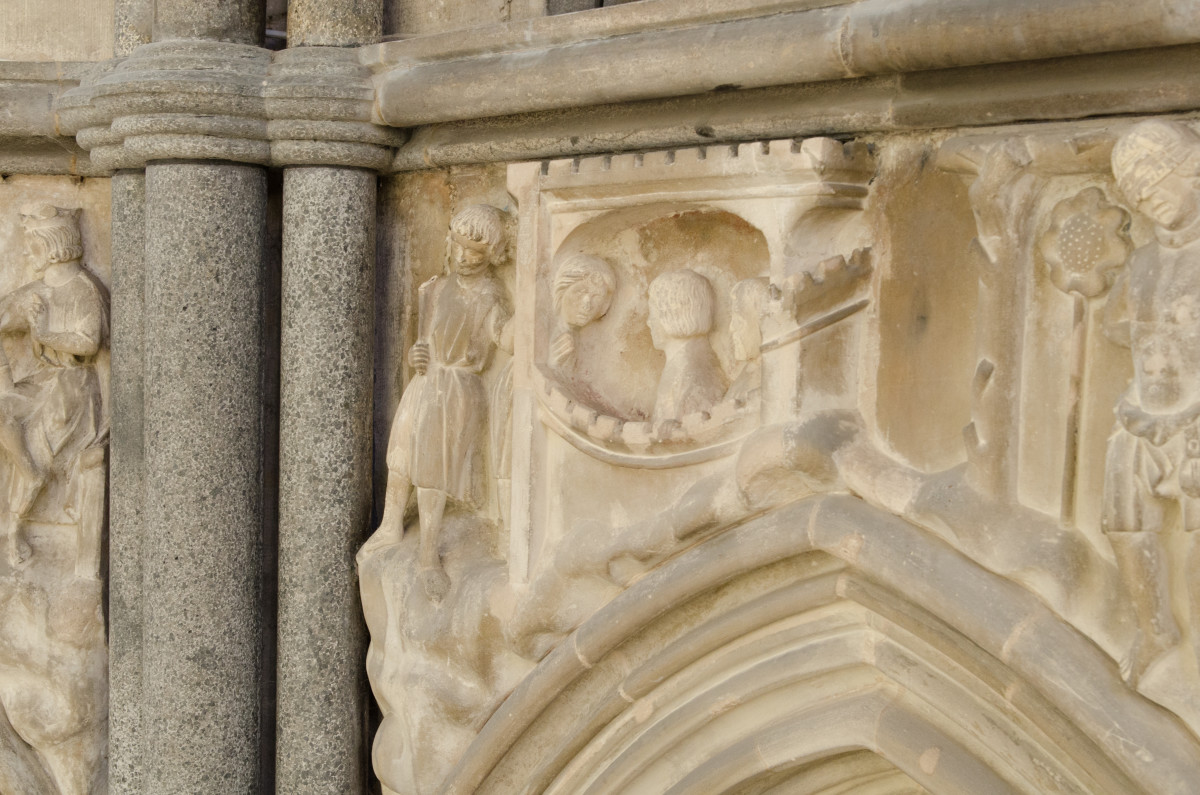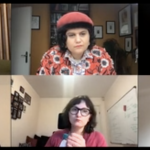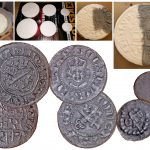Salisbury katedraal Inglimaal hoiab ühte neljast ajaloolisest dokumendist nimega Magna Carta. Selle, 1215 aastal välja antud dokumendiga piiras kuningas John Maata Inglise monarhide absoluutset võimu. Selle sündmuse 800nda aastapäeva tähistamiseks pani katedraal kokku näituse, kus on väljas dokument ise ja lisaks muud erinevat illustreerivat materjali. Näitus toimub katedraali kaheksanurkses lisaehituses, mille friise kaunistavad lood Vanast Testamendist kui ka kuningas Johni ja tema aadelkonna võimuvõitlusest. Seda viimasena nimetatud friisilõiku otsustati näitusel eraldi rõhutada ning parim viis selleks oli teha koopia, mida külastajad saaksid lähedalt uurida.
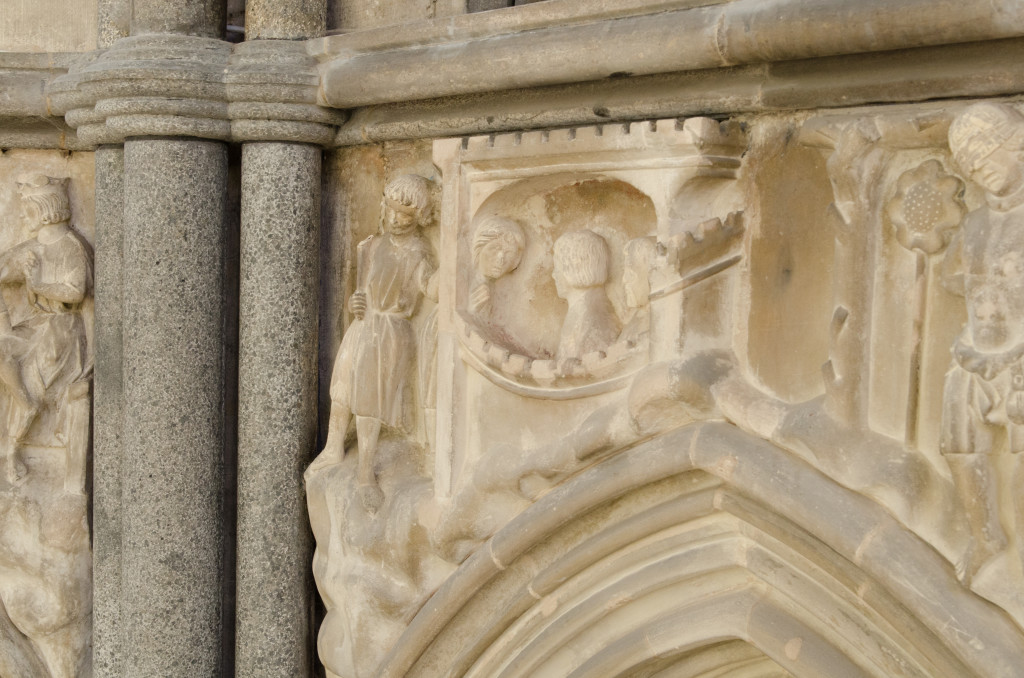
Lähivõte friisist / Foto: James Miles
Meiega kontakteerus Antomic Woodworking, kelle ülesandeks oli kogu näituse kokku panemine. Pakkusime vällja lahenduse, kus friisijupp mõõdistatakse kasutades fotogramm-meetriat ning saadud mudel prinditakse 3D printeril.
James, Paul ja Dominic Barker Southamtoni Ülikoolst veetsid pärastlõuna katedraalis ning tulemuseks saadi 492 fotot. Valikuliselt osa nendest fotodest kasutati 3D pinna-mudeli loomiskeks Agisoft Photoscan tarkvaraga. 3D printimise jaoks oli vaja mudelit edasi töödelda, anda pinnale sügavus ning luua friisist seest õõnes (materjali kokkuhoidmiseks) koopia.
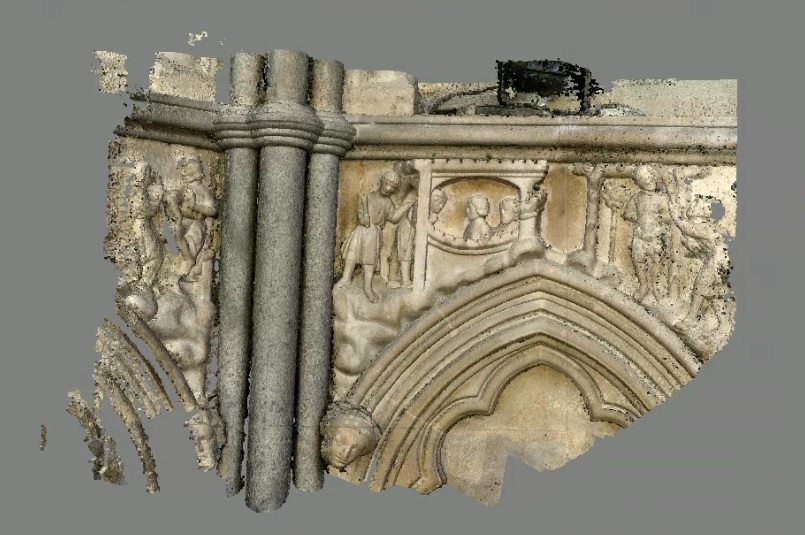
Punktipilv friisist
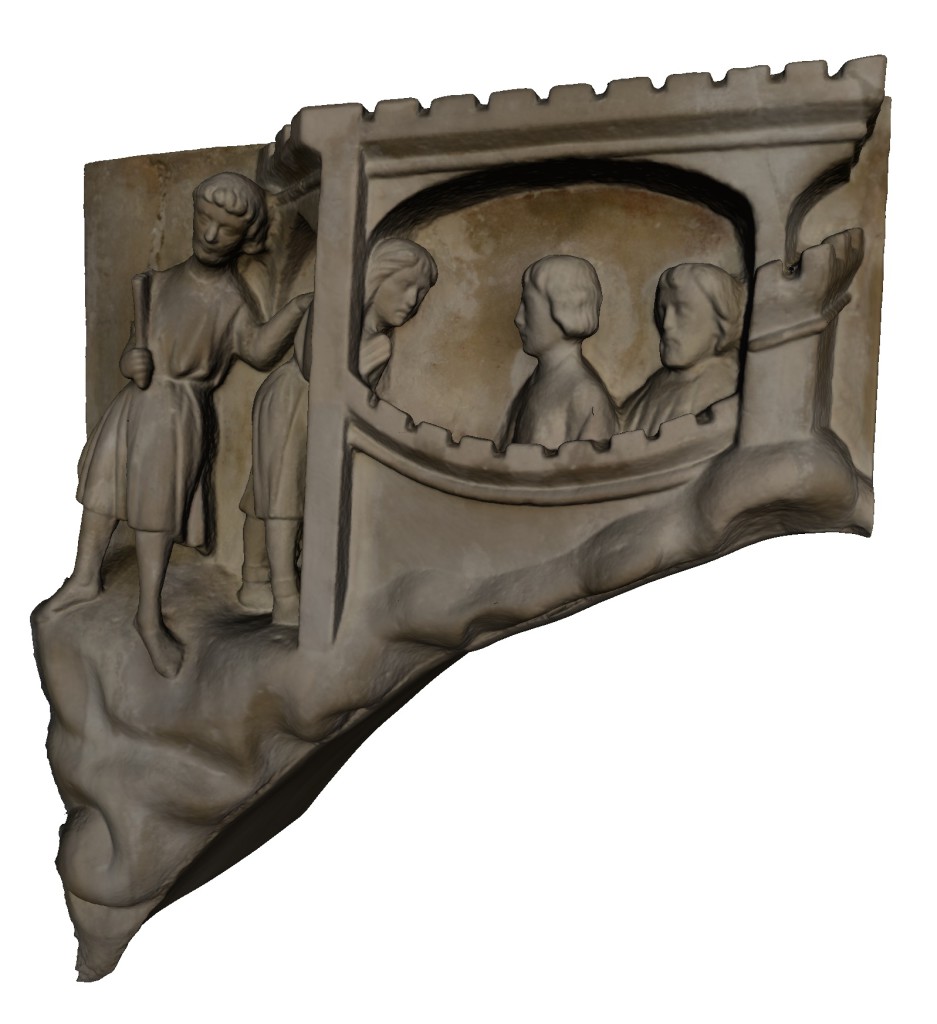
3D mudel friisist
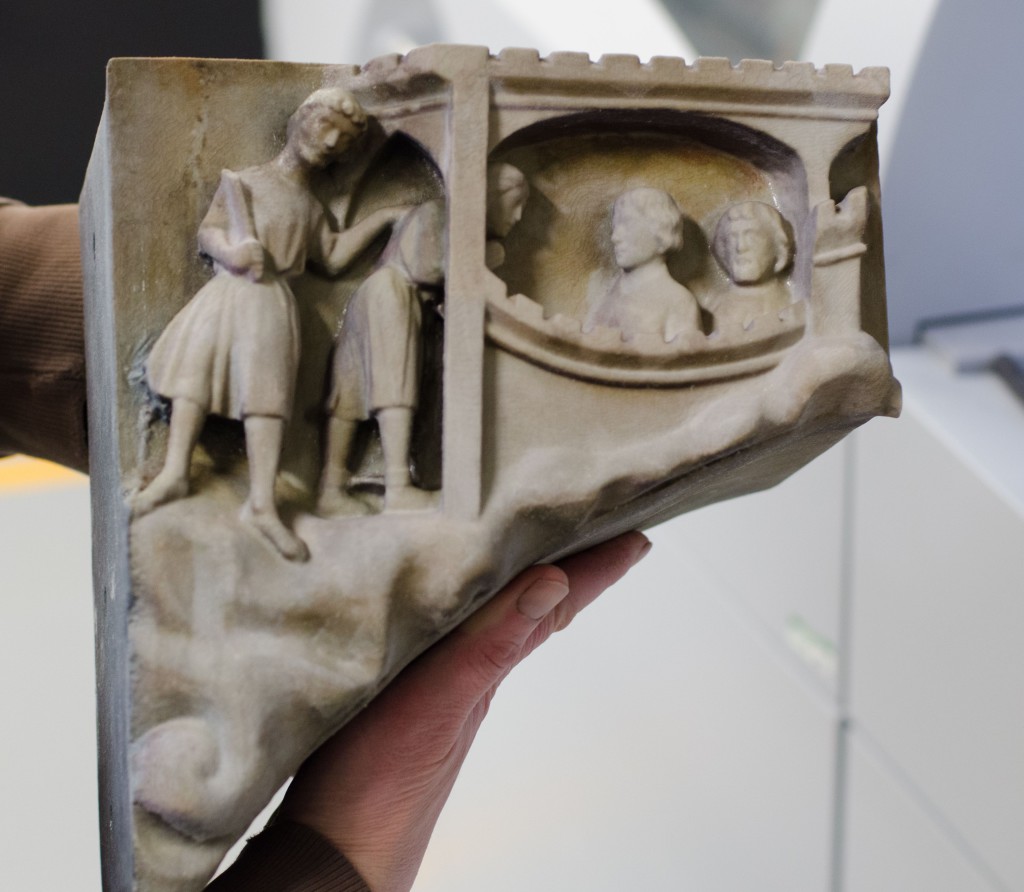
Friisi 3D print
3D print sai originaalist väiksem, seda printeri võimaluste tõttu. Sellele lisati käsitsi ka värvikiht – kogu friis on olnud algselt väga kirev. Kui te ise ei ole sattumas Salisburisse järgneva aasta jooksul, mil näitus avatud, siis saate tutvuda mudeliga veebibrauseri vahendusel allpool.
